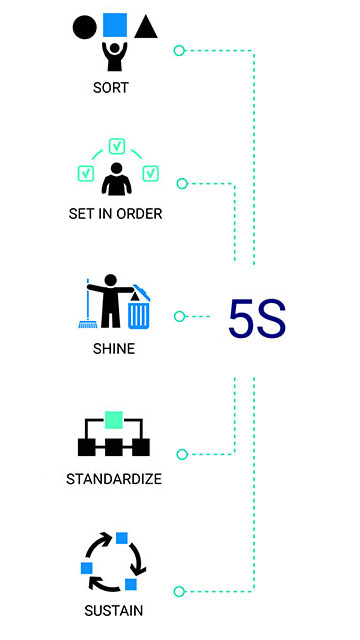
13
AprilAchieving Operational Efficiency
Efficient business processes are crucial for any organization to achieve its goals and stay competitive in the market. However, process inefficiencies can arise due to various reasons such as poor workflow design causing quality issues. The term Muda, which originated from the Lean Manufacturing consultant Manufacturing philosophy, refers to eight specific types of waste that can be removed from business processes. Eliminating these wastes is essential to achieve operational excellence.
The 8 Wastes, also referred to as the Process Inefficiencies, are: (1) Muda tai - Waste of Extra Products - Producing more than what is needed at any given time. This waste is a result of inaccurate demand forecasting and inventory management. Eliminating overproduction waste can lead to considerable cost savings and reduction in inventory holding costs.
 (2) Muda oya - Idle Resources - Wasting time caused by idle resources, machines, or people waiting for input. This type of waste occurs when production lines are underutilized, or when materials are not processed in a timely manner. Streamlining workflows, eliminating bottlenecks, and implementing just-in-time production can help minimize waiting waste.
(2) Muda oya - Idle Resources - Wasting time caused by idle resources, machines, or people waiting for input. This type of waste occurs when production lines are underutilized, or when materials are not processed in a timely manner. Streamlining workflows, eliminating bottlenecks, and implementing just-in-time production can help minimize waiting waste.
(3) Unnecessary Commodities - Moving goods unnecessarily. This waste can arise from insufficient logistical planning. Analyzing transportation routes, streamlining logistics, and using more efficient transportation modes can reduce waste.
(4) Inventory Waste - Excess inventory or storage costs. Excess inventory can result from inaccurate forecasting, excessive stockpiling. Implementing just-in-time ordering systems, reducing inventory levels, and using performance indicators to inform inventory decisions can help minimize this waste.
(5) Unnecessary Travel - Unnecessary movement of people. Motion waste occurs when employees move unnecessarily, either due to insufficient training. Improving staff amenities, introducing quality standards, and providing useful tools and equipment can help reduce motion waste.
(6) Defect Waste - Producing defective products that require rework. Defect waste often results from poor quality control. Implementing quality control measures, providing ongoing training, and maintaining equipment can reduce this waste.
(7) Overprocessing Waste - Using more resources, effort, or time than necessary to complete a task. This waste can arise from inefficient workflows. Identifying areas of inefficiency and streamlining processes, selecting the right equipment, and up-skilling employees can help minimize overprocessing waste.
(8) Logistical Expenses - Moving materials without adding value. This waste can result from inadequate process management. Simplifying workflows, standardizing processes, and minimizing hand-offs can reduce conveyance waste.
Identifying and eliminating the 8 wastes is an ongoing process that requires monitoring, analysis, and continuous improvement. Organizations can achieve remarkable enhancements in efficiency, productivity, and profitability by recognizing and eliminating these matters to be addressed. Effective waste elimination practices can be applied to various industries, and appreciating the benefits of production efficiency is crucial for any organization looking to optimize its processes and stay competitive in the market.


Reviews